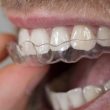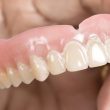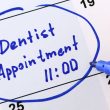Table of Contents
Talking about occlusion and malocclusion implies entering one of the most complex, ambiguous and incipient fields of Dentistry. Occlude or bring the teeth (upper and lower) into contact to, for example, chew; it is a physiological process that involves teeth, gums, jaws, nerves, muscles and joints.
Taking into consideration so many factors to distinguish between normal and abnormal it is, and accurately classifying the conditions that affect the health of the masticatory, stomatognathic or gnathological system; is something that Dentistry has not yet achieved.
The vast majority of existing classifications were developed from a static point of view, and mainly intended to be useful in the diagnosis of Orthodontics. However, none of them cover the functional aspects of occlusion. All are based on the alignment of the dental arches and the spatial relationship of the teeth and jaws, however, they overlook any signs or symptoms related to nerves, masticatory muscles and temporomandibular joints.
Even so, they are very useful to diagnose and treat dental and skeletal alterations that affect the appearance of the person, disfigure their smile and predispose them to the development of temporomandibular disorders.
Dental malocclusions are those that only involve the position and alignment of the teeth, while skeletal ones are more serious, complex and always involve an inadequate relationship of the two maxillary bones with each other (upper jaw and lower jaw or mandible), and/or in its relationship with the bone structures of the cranial base. Skeletal malocclusions usually reflect alterations in the craniofacial growth and development processes, whether of genetic or acquired origin.
Angle’s Classification
In 1899, Dr. Edward Angle (considered the father of modern Orthodontics), devised a fairly simple classification scheme that is universally accepted to this day. This author introduced the term “Class” to denote different mesiodistal relationships of teeth, dental arches and maxillae; that depended on the sagittal position of the first permanent molars, which he considered as fixed points of reference in craniofacial architecture.
Dr. Angle divided anteroposterior or sagittal malocclusions into three large groups: Class I, Class II and Class III.
Class I Malocclusion
It is characterized by a normal sagittal (anteroposterior) relationship of the jaws and dental arches, where the malocclusion is mainly confined to variations of the occlusion line in the incisor and canine areas, with crowded, spaced, protruded, retruded teeth or outside the dental arch. The skeletal and neuromuscular systems are often in balance.
Class II Malocclusion
Characterized by a distal (posterior) bite relationship of the mandible with respect to the maxilla. Class II malocclusion or distocclusion can be the result of a retrognathic mandible, a prognathic maxilla, or a combination of both.
Its main clinical signs are usually an increase in the overjet or horizontal overlap (horizontal separation between upper and lower incisors), proclination of the upper incisors, deep bite and a convex or retrognathic facial profile. Usually the patient projects a “protruding teeth” appearance.
Typically there is an overactive mental muscle, which contracts intensively to elevate the orbicularis oris and effect a lip seal, with a hypotonic upper lip and a hypertonic lower lip. The usual posture in the most severe cases is with the upper incisors resting on the lower lip.
Class III Malocclusion
Characterized by a mesial (anterior) bite relationship of the mandible with respect to the upper jaw. Class III malocclusion or mesiocclusion can be the result of a prognathic mandible, a retrusive or hypoplastic (underdeveloped) maxilla, or a combination of both.
There may be moderate to severe crowding in both arches, especially in the upper arch. The lingual inclination of the lower incisors and canines is typical, which becomes more pronounced the more severe the case, due to the pressure exerted by the lower lip in its attempt to close the mouth and hide the malocclusion. The neuromuscular system is usually severely affected and the facial profile is concave in the vast majority of cases. Usually the patient projects a “witch” appearance.
Vertical Malocclusions
Alterations in the vertical plane have been classified in multiple ways, according to their location in the dentofacial complex, the structures that are involved, or their main etiological factor. However, the easiest way to identify them is to determine whether they are affecting the dentoalveolar structures, skeletal ones, or both.
Dentoalveolar Vertical Alterations
They are characterized by an alteration restricted to dental relationships, without any component of skeletal dysplasia of the maxillary and mandibular bone bases, and generally originate as a consequence of deforming functional habits such as finger sucking and tongue thrust; among others.
- Dentoalveolar Open Bite with Horizontal Growth Pattern Generally, proclination of the upper and lower incisors is observed, as a result of tongue protrusion, considered one of the main etiological factors in the development of this alteration.
- Dentoalveolar Open Bite with Vertical Growth Pattern Characterized by protrusion of the upper anterior teeth and lingual inclination of the lower incisors.
- Dentoalveolar Deep Bite It is characterized by extrusion of the antero-superior and antero-inferior central incisors, which may be accompanied by retroinclination and dental retrusion.
Vertical Skeletal Alterations
They are caused as a consequence of alterations in maxillo-mandibular growth, with the presence of an abnormal skeletal pattern. Their causes can be genetic and acquired:
- Short Face Syndrome or Skeletal Deep Bite A square face is observed as a result of an imbalance between facial height and width, mainly at the expense of the lower facial third. In addition, small teeth susceptible to dental abrasion, crowding and retrusion, supra-eruption of lower incisors, wide upper dental arch and narrow lower dental arch are characteristic of it; and of course, anterior deep bite.
- Long Face Syndrome or Skeletal Open Bite It is characterized by an increase in total facial height, due to the elongation of the antero-inferior third of the face. In addition, lip incompetence (separation at rest greater than 4 mm), excessive exposure of the upper incisors, gummy smile (which exposes an excessive amount of gingiva), underdeveloped chin, narrow maxillary arch and wide mandibular arch are frequent; and of course, anterior open bite.
Transverse Malocclusions
Transverse malocclusions are occlusion alterations in the transverse or horizontal plane, independent of the relationship that exists in the sagittal or vertical planes.
Normal occlusion in the transverse plane is considered to be that situation in which the palatal cusps of molars and upper premolars occlude in the main and triangular fossae of lower molars and premolars. Therefore, in a general sense, it could be defined as the alteration in the correct occlusion of the palatal cusps of premolars and molars of the upper jaw with the fossa of premolars and molars of the mandible, in the transverse plane.
- Posterior Crossbite It is the situation in which the buccal cusps of molars and upper premolars occlude in the fossae of lower molars and premolars. This can be unilateral (on one side only) or bilateral (if it affects both sides). They can be caused by a deficit in maxillary development, an excess of mandibular development, an association of both and the muscular pattern; among other factors. Oral breathing habits, atypical swallowing or finger sucking can also cause this type of alteration.
- Scissor Bite It refers to the situation in which the palatal surfaces of the upper molars and premolars are in contact with or outside the vestibular surfaces of the lower ones. The cause is usually the transverse deficit of the jaw.
Treatment Options
The treatment of malocclusions involves an infinity of possibilities, among which we find Interceptive Orthodontics, Dentofacial Orthopedics, Corrective Orthodontics, Orthognathic Surgery and Neuro-Occlusal Rehabilitation. However, the most important thing is to accurately determine the etiology of the problem and the stage of development in which the patient is, since only through an accurate diagnosis will we be able to choose the most indicated therapeutic option.
Interceptive Orthodontics
Interceptive Orthodontics or Children’s Orthodontics is a treatment that is carried out in children with the aim of guiding tooth eruption and/or eliminating any oral habit that may interfere with the correct growth and development of the jaw bones. Serial extractions, correction of mouth breathing and placement of “habit-breakers” such as lingual grids and spurs, lip bumpers and some functional orthopedic devices; are the most common procedures in this type of treatment.
Dentofacial Orthopedics
It consists of redirecting the growth and development of the jaws and other facial bones when unfavorable patterns and causes of skeletal malocclusion are detected. Treatment is generally based on the use of intraoral and extraoral devices capable of generating heavy (orthopedic) forces that exert a remodeling effect on the sutures and bones of the face. This type of treatment is only possible before puberty or sexual maturity.
Corrective Orthodontics
Orthodontics treatments with fixed appliances or brackets can be performed at any age, and their main objectives are to correct the position and alignment of the teeth, shape of the arches, facial profile and dental interdigitation when biting. Brackets are the only mechanical devices capable of precisely moving teeth in all 3 planes of space.
Orthognathic Surgery
It is a type of surgery reserved for adult patients who have already completed their growth period (generally after 18 years of age) and who present severe skeletal malocclusions or dentofacial deformities. With this type of intervention, the Maxillofacial Surgeon will be able to move the maxillary bones almost at will to achieve a more harmonious relationship between them, and between them and the other facial bones. Orthognathic Surgery encompasses a large number of procedures capable of, literally, transforming a person’s face.
Almost always, before being operated, it is necessary for the Orthodontist to align the patient’s teeth and place them in a position compatible with the objectives of the surgery. For this reason, these types of cases are usually called combined or orthodontic-surgical treatments.
Neuro-Occlusal Rehabilitation (NOR)
Neuro-Occlusal Rehabilitation (NOR) is a therapeutic method focused on recovering the correct function of the stomatognathic apparatus. Its basic principle is to achieve what is called occlusal balance, which allows a harmonic masticatory function.
NOR treatments are based on the replacement of all lost teeth (prosthodontic treatment) and the use of special appliances (splints) designed to recover the functional occlusal plane, with the largest number of dental contacts possible. At the same time, the treatment is complemented with selective grindings and advice for proper chewing, correcting harmful habitual postures and positioning the tongue properly; apparently simple but highly effective factors in the oral rehabilitation process of adults with occlusion problems.
“Usually, Only Orthodontists and Maxillofacial Surgeons Are the Only Specialists Capable of Detecting and Diagnosing Alterations in Facial Growth and Skeletal Malocclusions on Time”.
DENTAL TIP
Dentistry in Venezuela: A Lifesaver for Millions of People
In many countries of the world the vast majority of people do not have private health insurance and Dentistry has become prohibitively expensive for most of its citizens and residents. This has led many patients to delay, or even to rule out, their oral rehabilitation; seriously compromising their well-being and quality of life.
However, fortunately things have changed, the world has become global, information is easy to access and travel is very cheap. If you face an economic barrier, dental tourism is a great opportunity that will allow you to save up to 70% and immediately access a type of service reserved for very few in your country. The difference is almost always thousands of dollars or its equivalent, and simply; it may be your lifesaver on the journey to your new smile.
Give yourself a chance, contact us as soon as possible and check that in DENTAL VIP you will be able to easily get the treatment plan you want and deserve.












